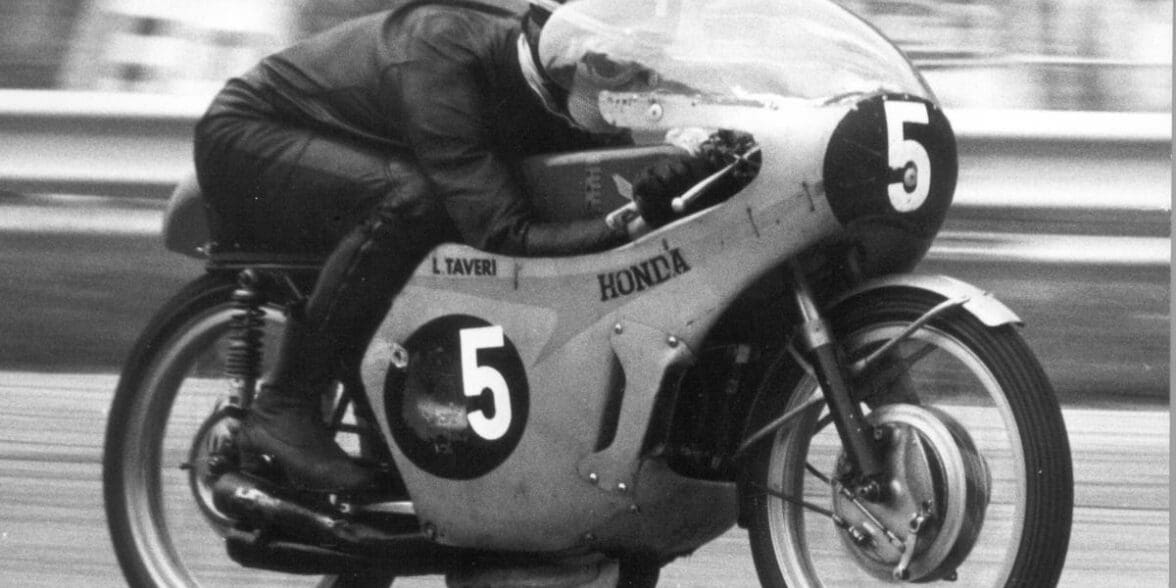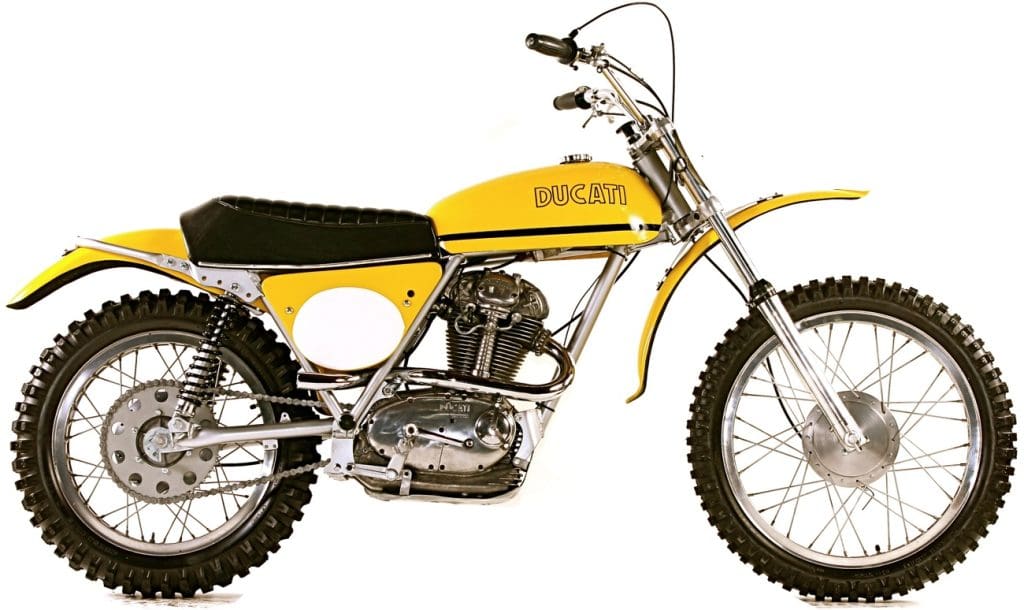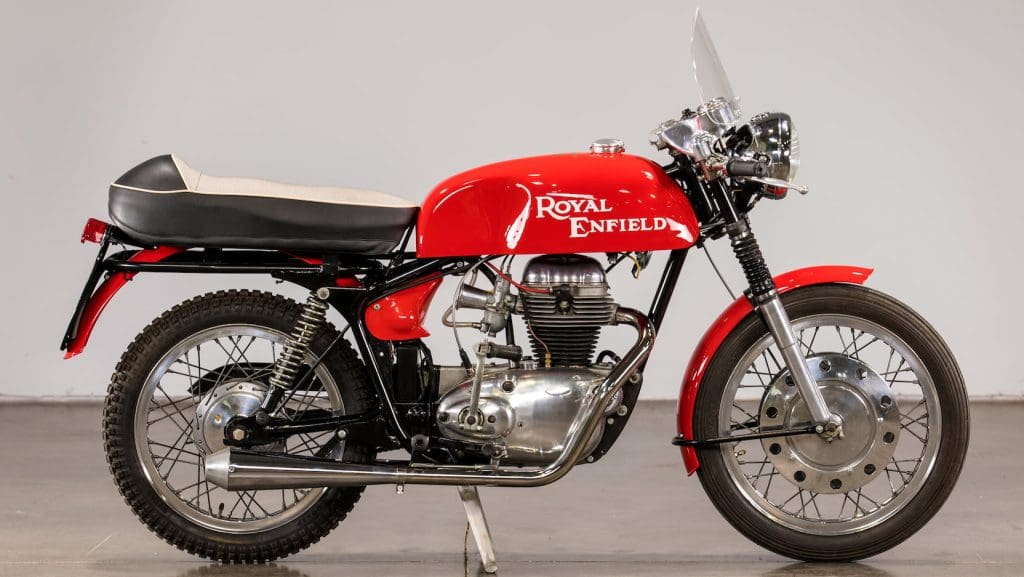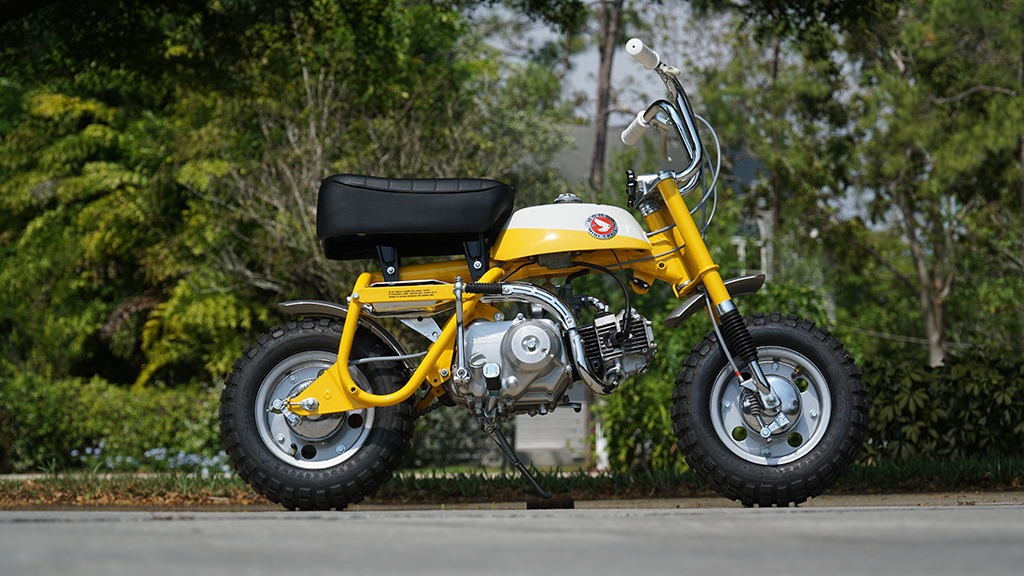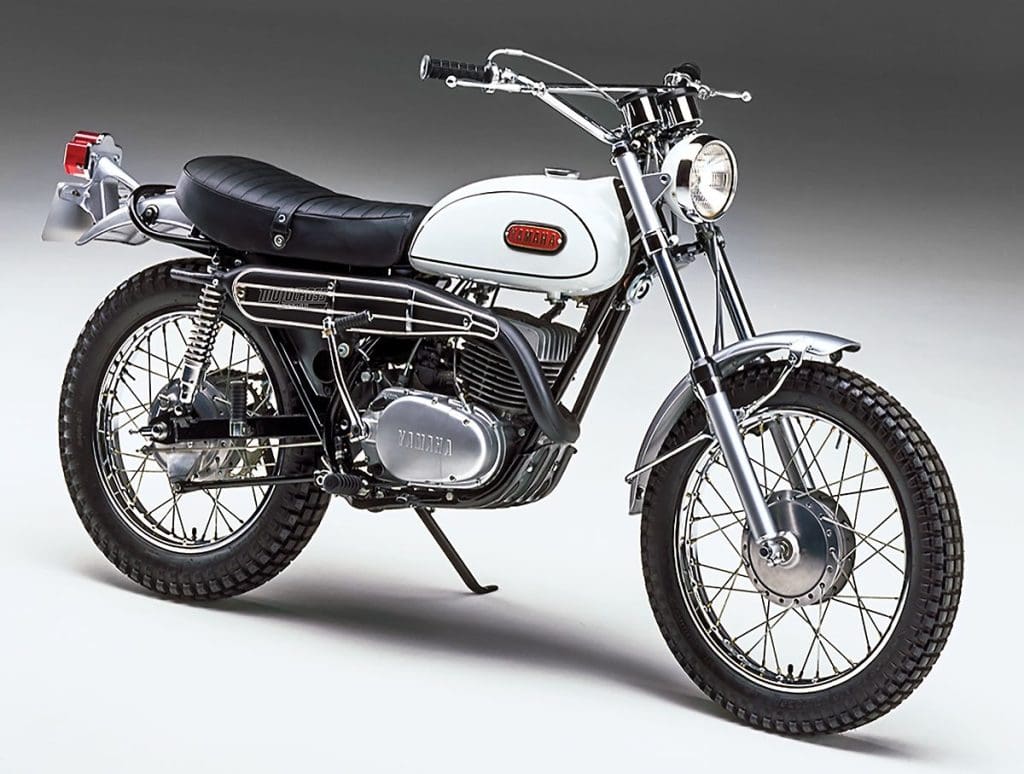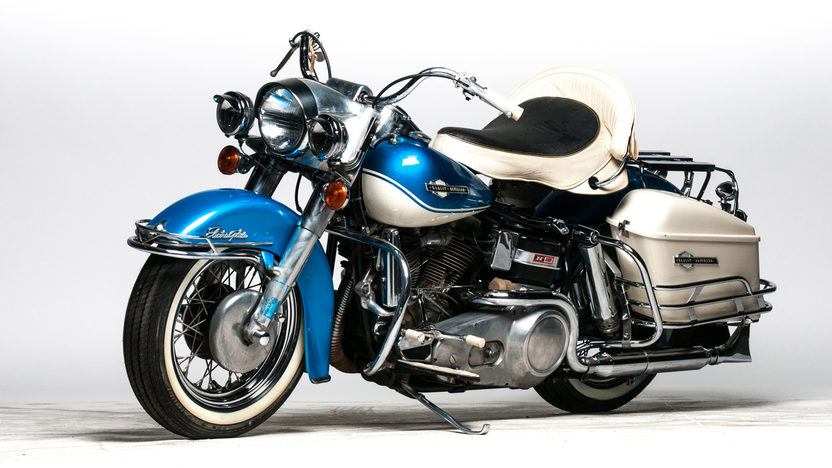The 1960s was a transformative time for the motorcycle industry. As the mobility culture shifted from affordable motorcycles to affordable four-wheelers, the industry found itself at something of crossroads and on the cusp of an identity crisis. The 60s would bring about the beginning of the end for the British industry, an unexpected rise of the Japanese industry, and a shift from small-capacity mobility solutions to thoroughbred performance bikes.
The racing scene was experiencing a golden age, with racing championships becoming mainstream entertainment and riders like Giacomo Agostini and Mike Hailwood becoming household names. Safety measures and rider protectives were under the spotlight, and the decade ushered in new innovations, culminating in the Bell Star—the first real full-face helmet—hitting the market in 1966.
No matter how you view the 1960s, there’s no denying that it was an exciting time to be on two wheels. With that in mind, let’s take a look at some of the best motorcycles of the 1960s.
Ducati Scrambler
The first Ducati Scrambler rolled onto the scene in 1962 and left a lasting legacy. Today, the modern Scrambler range features a number of exciting models that have gone on to become some of Ducati’s best sellers, but the Scrambler of today wouldn’t exist without the original Scrambler line of the 1960s.
Produced between 1962 and 1974, the original Ducati Scramblers were powered by single-cylinder engines in a variety of sizes, with frames altered for off-road riding, and dirt-track accessories. These Scramblers were available in 250 cc, 350 cc, and 450 cc displacements (with an additional 125 model added in the 70s), and were widely popular.
The 350 model, was a particular favorite. Equipped with a potent 340.2 cc single-cylinder engine, 27 horsepower, Marzocchi suspension, spoked wheels, and a lightweight frame, the Scrambler could hit speeds of up to 81 mph, whilst looking incredible at the same time.
It’s no wonder that Ducati was keen to re-introduce the range in 2015. Since its re-introduction, the Scrambler has grown into an entity in its own right: and that’s why we consider the Scrambler to be one of the most influential and greatest motorcycles of the 1960s.
BSA Rocket Gold Star
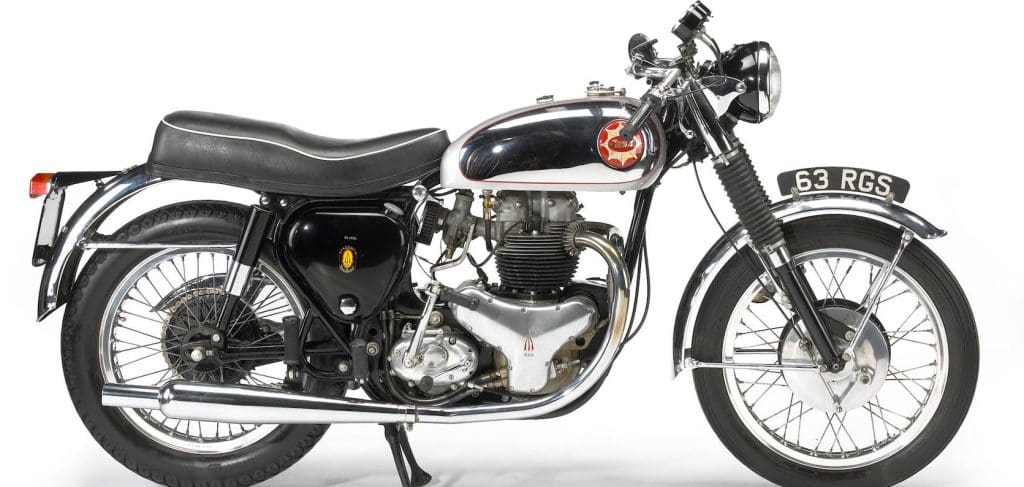
BSA’s Rocket Gold Star was the uprated version of BSA’s legendary Gold Star. The Gold Star itself is worthy of note, with a history stretching from 1939 to 1963, but if push came to shove and we needed a single BSA model to sum up the 60s, it would be the Rocket Gold Star. Manufactured for a very brief period between 1962 and 1963, and with only 1,584 units ever made, it’s a rare beast indeed.
Unlike the regular Gold Star models that could be purchased with either a 350 cc or 500 cc single-cylinder powerplant, the top-spec Rocket Gold Star featured a different engine configuration. Under the proverbial hood, the Rocket Gold Star drew power from a 650 cc parallel-twin engine that produced an impressive output of 40 horsepower and delivered top speeds of up to 115 mph.
Good luck trying to find one of these for your collection though. With such a small production volume, they have become incredibly sought after and command terrifyingly high prices. Even though 1,584 were made, 272 of those were heavily modified for off-road riding instead, so pristine models are very hard to come by. However, the BSA Rocket Gold Star is a must-have for any collector looking to curate a collection of the best 60s motorcycles.
Royal Enfield Continental GT
Royal Enfield is one of those brands that often gets overlooked on lists like these. It’s a heritage brand with a long and illustrious history, with a legend that began in England but now thrives in India. While the Bullet is probably the best-known model in the Royal Enfield line-up, it’s the Continental that best encapsulates the 1960s.
At the end of the 50s, the café racer king in Great Britain. Eager to capitalize on this trend, and produce a smaller capacity and more affordable factory-made alternative to the likes of the BSA Gold Star, Royal Enfield set to work inadvertently creating a classic. In 1963, the brand pulled the covers off of the Continental GT: a factory café racer with a powerful punch.
Built around a 248 cc air-cooled single-cylinder engine, with 20 horsepower on tap, the Continental ticked all of the right boxes for budding café racers on a budget. It had clip-on handlebars, flashy instrumentation, a sports-inspired seat, and a stunning exhaust system. It also performed as good as it looked, clocking a top speed of around 84 mph, and completing a long-distance run from the north of Scotland to the South of England in 22 hours and 20 minutes – an incredible feat for the time.
A true icon of the 60s, it’s no wonder that Royal Enfield revived the model in 2014, albeit with a larger displacement and updated tech.
Honda Z Series
While the likes of the Royal Enfield Continental might have been the stuff of dreams for many budding riders, the Honda Z series was more likely the reality. The classic Monkey Bike was the first bike for many young riders. It was small, lightweight, and user-friendly. In fact, the first Monkey Bikes were actually designed for children to ride at a Japanese amusement park before being upgraded and mass-produced for the export market!
Officially known as the Z series (Z50A, Z50J, Z50M, etc) these models quickly became known colloquially as the Honda Monkey Bike due to its funny riding position and small stature, similar to a simian crouch.
Small is size, these Monkey Bikes were built around a 49 cc horizontally positioned single-cylinder engine, boasting 4.5 horsepower and a top speed that largely depended on what you’d just had for dinner.
The original Z50A first went into production in 1964 and enjoyed a long tenure in the Honda line-up until 2017. However, in 2019, the Honda Monkey returned but with a new formula built around the Grom platform. Though it’s not the same as the original Z50, the modern Monkey and its homage to the original is proof that the Honda Z series is one of the most important models in motorcycling history.
Yamaha DT-1
During the 60s, some manufacturers were trying to deliver nothing but the best performance possible, while others were struggling to stay in business. One manufacturer, however, saw a unique gap in the market and jumped to fill it. We’re talking about Yamaha and its launch of the incredible and influential DT-1.
US sales were in a slump, and Yamaha’s executives saw that there was a small but untapped trend for niche machines designed for off-road use. Off-road racers in the US would either have to invest in purpose-built specialty machines like Bultacos or Husqvarnas, or take traditional motorcycles and modify them for off-road use. Never missing an opportunity, Yamaha introduced the DT-1: a factory-built trail bike that required no modification for enthusiastic off-road riding.
Built around a potent 246 cc single-cylinder two-stroke engine, the DT-1 produced a hearty 18 horsepower. The engine was placed in a cutting-edge frame with capable telescopic forks and plenty of ground clearance. It was the world’s first dedicated off-road motorcycle, igniting a trend that remains popular to the present day.
The first DT-1 (known as the Trail 250 in some markets) has been noted as one of the 240 Landmarks of Japanese Automotive Technology by the Society of Automotive Engineers of Japan. And that’s why it makes it onto our list.
Harley-Davidson FLH Electra-Glide
The 1965 Harley-Davidson FLH Electra-Glide is notable for two reasons. The first reason is that it’s the last year that Harley-Davidson would use their venerable and well-respected Panhead V-twin engine. The second reason is that the Electra-Glide was the first large-capacity Harley-Davidson motorcycle that came equipped with an electric start as standard, hence the “Electra-Glide” name.
So, in some ways, 1965 was something of an “end of an era” moment, but also the start of something new, as electric starters would prove to be essential equipment, and the departure of the Panhead would make way for the Shovelhead (which would eventually be replaced by the Evolution engine many years later).
The electric starter was also complemented with an advanced 12-volt electrical system, an upgrade on the previous 6-volt platform, along with a bigger battery too. Another notable difference from the older FL models included a noticeable “Electra Glide” fender logo too.
A year later, however, the Panhead would be swapped for a Shovelhead, so if you can find a ’65 FLH Electra-Glide, hold on to it—it will be worth some money. While it might not be as iconic as other models on this list, the last Panhead is certainly worthy of remembrance.
Honda RC166
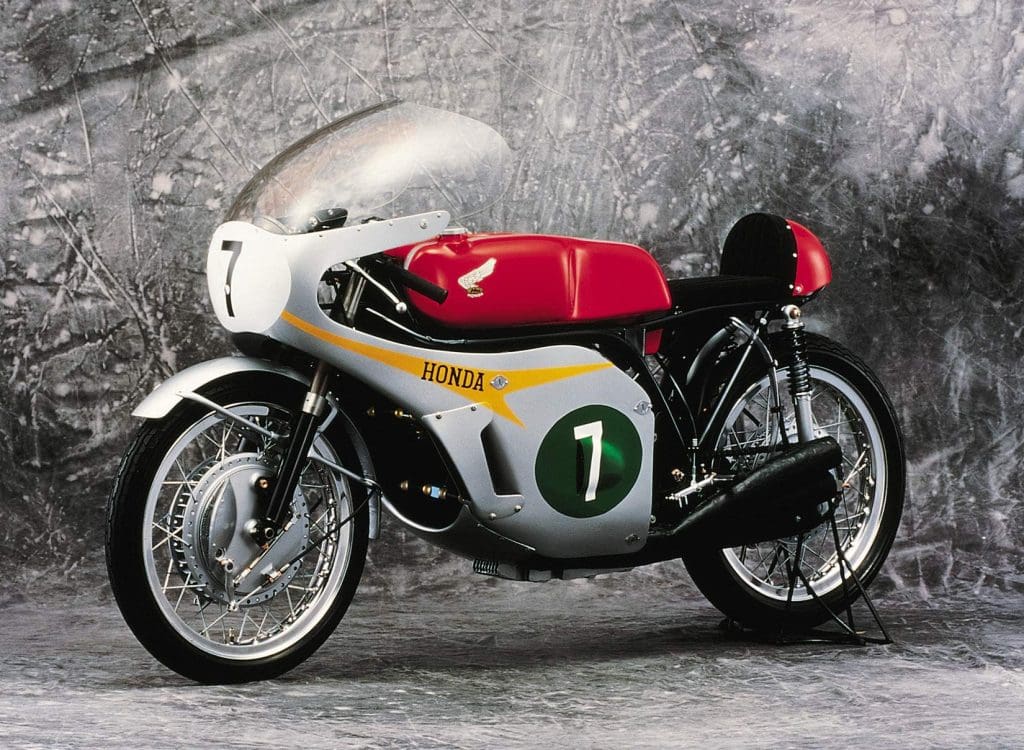
There’s absolutely no way you can have a list of the best motorcycles of the 1960s without including a few golden age racers. Honda’s rise to the top can be encapsulated by a number of racing models, but if we had to choose one, it would be the devastatingly beautiful RC166. This stunning motorcycle won not one but two world titles, bringing Honda from a relatively unknown underdog to the most formidable racing outfit ever created.
The RC166 is a particularly special machine. In plain English, it was built around a 250 cc 24-valve. inline-six engine. The engine produces a power output of 65 horsepower, revving to just under 20,000 rpm—which is absolutely mental when you think about it. As for the top speed, that was north of 150 mph.
On paper, it was a powerhouse. In reality, it was even more so. In the 1966 season, Mike Hailwood piloted the RC166 to victory in all 10 races that he entered. Hailwood secured the championship for a second time in 1967, albeit with stiffer competition from Yamaha. With those victories firmly cemented into the history books, Honda could firmly declare itself a racing superpower and would continue that legacy right up to the present day.
MV Agusta 500 3C
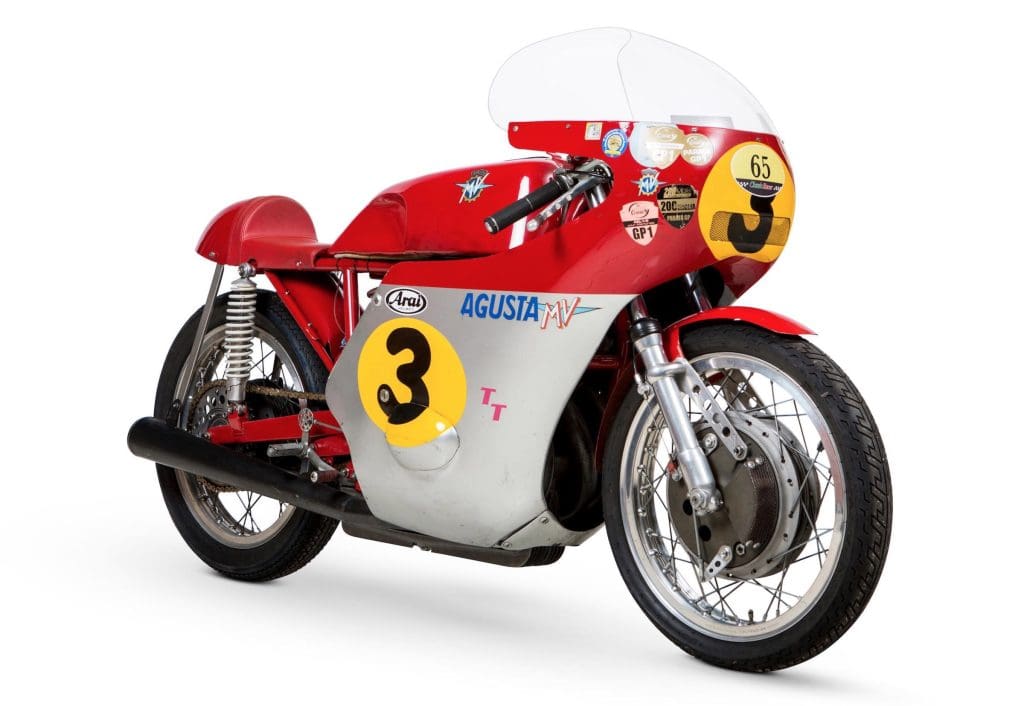
While we’re on the subject of headline-grabbing racing machines, it would be a disservice to racing fans not to include the legendary MV Agusta 500 3C. While Honda was winning in the lower-displacement classes, it couldn’t yet topple MV Agusta in the premier class. For years, MV Agusta had dominated the racing scene using their four-cylinder engine, but in the 1966 season, the Italian manufacturer swapped out the classic 4C for the triple-cylinder 3C instead.
The redesigned engine featured a displacement of around 420 cc, but produced an impressive power output of up to 76 horsepower. Swapping from a four-cylinder to a three-cylinder engine was a decision made by Count Agusta, who was impressed with the triple-cylinder engine used on the German DKW RM 350. Though his engineers were skeptical, the 500 3C went on to win the championship that year under the command of racing legend Giacomo Agostini.
Like the Honda RC116, the MV Agusta 500 3C is an important piece of racing history, and thusly an important part of the motorcycle industry. The 1960s truly were a golden age for racing, with each year bringing newer and more advanced innovations, with motorcycles slowly evolving into what we know and love today.
Norton Commando
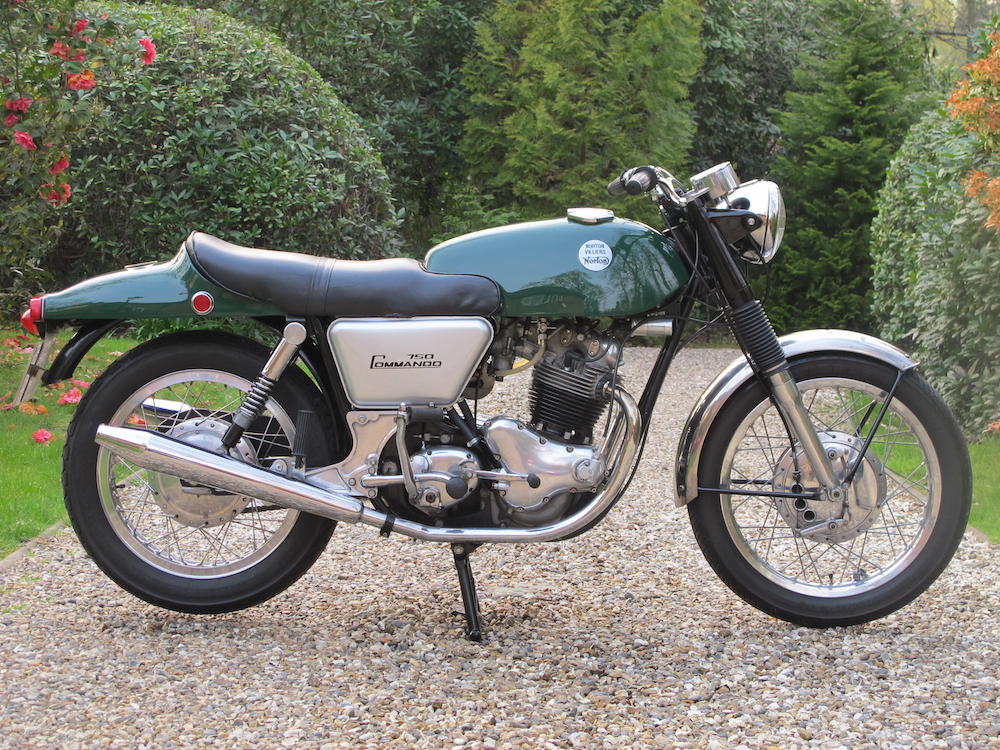
The Norton Commando rolled onto the scene in 1968, just in time to see the British motorcycle industry fall into ruin. However, just before British engineering began to decline, Norton delivered something of a swansong in the form of the Commando. For many, it’s the quintessential British motorcycle, and it shouldn’t come as a surprise to learn that MCN awarded the Commando the “Machine of the Year” title for four consecutive years, between 1968 and 1972.
Now, the Norton Commando is best remembered as an 850, but it actually started life as a 750. The early Commandos of the 60s were all equipped with a potent 745 cc air-cooled OHV parallel-twin engine. It wasn’t designed for sports performance, but the Commando could still hit impressive top speeds of 115 mph, thanks to the engine’s 58 horsepower output. However, the engine was replaced in 1972 with a larger 828 cc unit for additional performance.
Though it wasn’t a performance bike, the Commando was still packed full of innovations. For example, the early models were plagued with vibration issues, but Norton quickly addressed these with the introduction of an advanced Isolastic System frame system that prevented too many rigid components from vibrating against each other. The result was a smooth ride experience built around a capable engine. And that’s what made the Commando such a success.
Honda CB750 Four
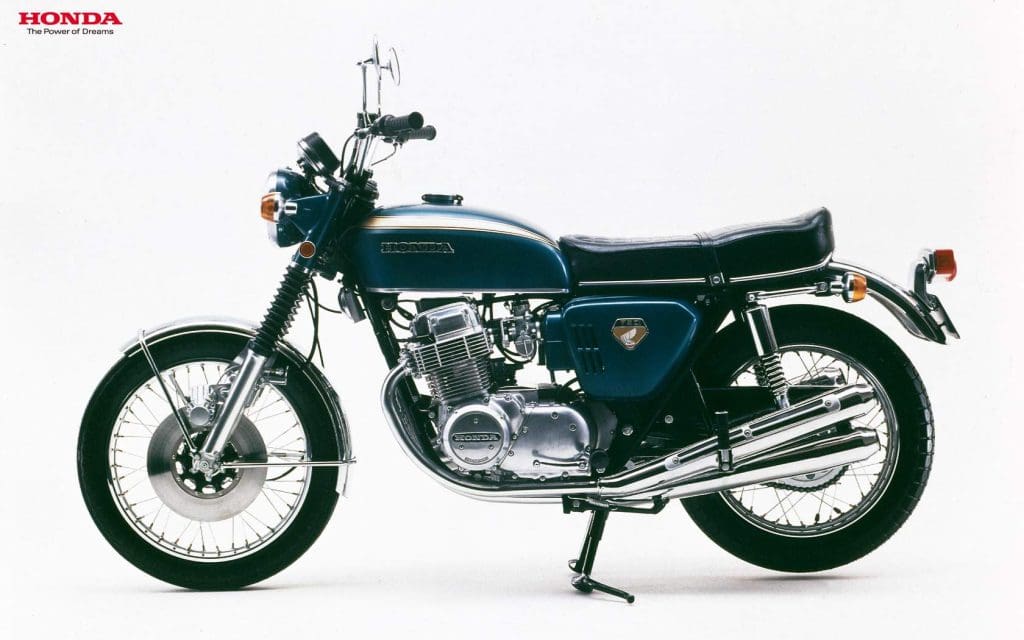
Any self-respecting list about 60s motorcycles has to include the Honda CB750 Four. This is the motorcycle that single-handedly defined what a modern motorcycle should look and feel like. Celebrated by riders across the world, and included in the AMA Motorcycle Hall of Fame, Discovery Channel’s Greatest Motorbikes Ever, and more lists than you could care to read, the 1969 Honda CB750 is something special. It was the world’s first superbike.
The development of the CB750 was relatively swift. During 1968, Honda produced a number of exciting prototypes before unleashing the production-ready model onto the world in 1969. The CB750 was built around a 736 cc air-cooled inline-four engine, producing a heady 68 horsepower, 44 lb-ft of torque, and propelling the CB to a top speed of 125 mph.
Aside from the cutting-edge engine, the CB750 also sported an innovative front disc brake, which was something of a rarity for the time. Not only that, but it also featured a (relatively) affordable price tag, allowing average riders to enjoy real sports performance without having to invest in a dedicated racing machine.
While it arrived at the end of the 60s, the CB750 was the model that changed the motorcycling landscape forever. It marked the end of British dominance. It provoked a performance war with Kawasaki, and it launched Honda even further into the mainstream. If you’re looking for one motorcycle that defined the era, then it has to be the 1969 Honda CB750.


